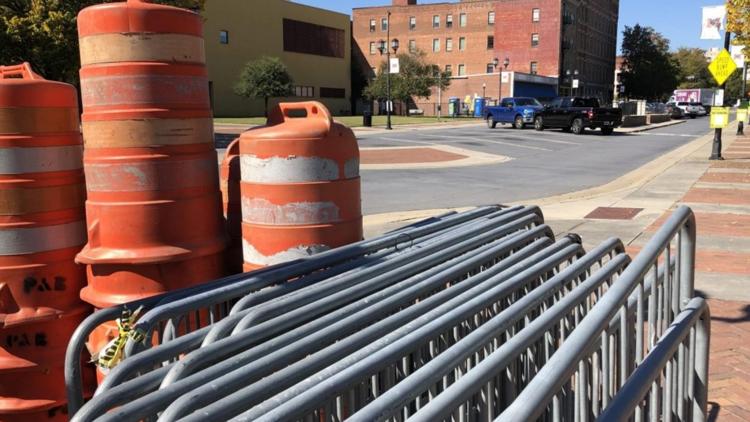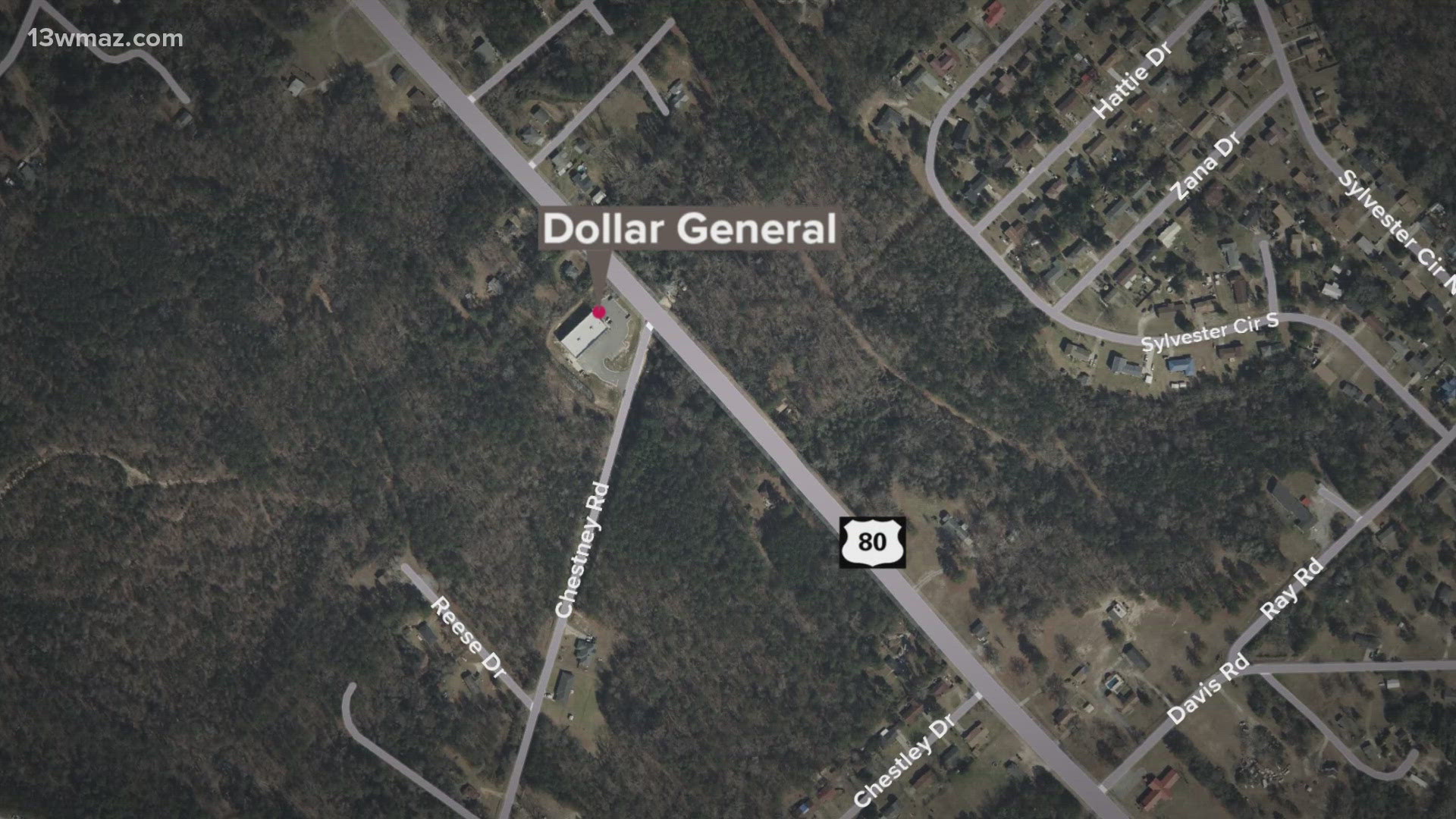MACON, Ga. — Macon visionaries are optimistic the award-winning success of downtown’s resurgence will spread into surrounding neighborhoods and lure more visitors to the urban core through the Macon Action Plan XL.
Next on their horizon are 19 new strategies to capitalize on the likelihood of having Georgia’s first national park at the Ocmulgee Mounds, revitalize nearby neighborhoods and connect them to the river by enhancing the Ocmulgee Heritage Trail.
“Hope is so much more contagious than despair,” NewTown Macon President Josh Rogers said at this week’s unveiling of Interface Studio’s third iteration of the people-led plan that is intended to build on two prior plans that had a major impact on the city since 2014.
When NewTown won a Great American Main Street Award this summer, Rogers said the audience audibly gasped when learning downtown went from 70% abandoned to 85% thriving.
“What’s coming next will be miraculous. We’re making a turnaround like nowhere else ever has or ever will because this is how Macon gets stuff done,” Rogers said of the cooperation between NewTown and the Urban Development Authority, and funding efforts from the Knight Foundation, Peyton Anderson Foundation and Community Foundation of Central Georgia.
These new plans for enhancing neighborhoods and strengthening downtown development did not come out of thin air, but from hundreds of people answering the call to dream big about the future of Macon and being willing to work hard to make it happen.
“We actually put ourselves on the map nationwide for the way we plan, something called a democratized implementation of community-led plans, which is wonky-speak for the people planned it, the people did it, and the people are better for it,” said UDA Executive Director Alex Morrison, who began his urban planning career about 20 years ago working on the College Hill Corridor while he was still a student at Mercer University.
That venture also was Interface Studio’s first foray into making downtown Macon a better place to live, work and play.
“An investment in downtown is an investment in neighborhood improvements across the entire city. That is why this work is so important,” said Interface’s Scott Page. “I can’t think of a single great city without a single great downtown. And great downtowns do not happen by accident.”
Strategies for success
Much of downtown’s renaissance came from foundation grants to implement exciting ideas, such as the Christmas Light Extravaganza and $16 million business loans that boosted 17 entrepreneurs since 2016.
Suggestions for the next five years carry a hefty estimated price tag of up to $268 million, according to plan estimates for projects. One of the costliest suggestions is a new pedestrian bridge over the Ocmulgee River to connect downtown to the convention center, east Macon and national park.
“Something that says ‘welcome to Macon’ and makes that kind of statement. We’re putting it out there as an aspirational idea because we never know when something here in Macon will take hold,” Page said.
Prior Macon Action Plan work resulted in more than $400 million in private investment and almost 200 new businesses, according to Interface’s website.
Once-vacant buildings now house thriving businesses that pay taxes, increase the tax digest and provide more financial resources for the city to re-invest and become more attractive for growth and new industries.
Existing MAP projects include the Cotton Avenue Plaza, upgrades to the Booker T. Washington Community Center and pool, formulating plans for a Third Street family-friendly park, growth in Black-owned and women-owned businesses, the East Macon Mill Hill Arts Village, Brookdale Resource Center and creation of an affordable housing fund.
What makes Macon unique, Page said, is that 93% of plans from the two prior plans have been implemented or are significantly underway.
The implementation of MAP XL won’t preclude tackling the remaining goals from the last decade, but will focus on five main actions: strengthen neighborhoods with a range of housing options, support and reinforce local businesses, offer an exceptional urban core experience, prepare for tourism growth and connect destinations.
Pathways to Pleasant Hill, Tindall Heights and east Macon coupled with better bike lanes and safer pedestrian routes are integral to the plan.
Enhancing Linear Park to reconnect Pleasant Hill neighbors split by Interstate 75 and the Low Income Housing Tax Credit residential development on the site of the old Progressive Christian Academy are a couple of ways to encourage urban core living, as well as the proposed East Bank plans for housing, retail, offices and a hotel near a new entrance for the Ocmulgee Mounds.
A suggested “welcoming loop” of about a mile walk around the heart of downtown attractions is one way to lure park visitors to experience the flair and unique flavor of the city.
Capitalizing on Macon’s rich music heritage and enhancing that reputation with more live music opportunities, an organized music trail and marketing campaigns to cement the concept of a “music city” also is a priority.
Growing attractions downtown will give national park visitors a reason to stay a few days and take in all Macon has to offer.
More pedestrian-friendly plazas could be created by eliminating vehicle turnarounds on Poplar and Third streets and closing off Cherry Street between MLK Jr. Boulevard and Fifth Street.
Population in the downtown core has more than doubled since 2010, but residential development is slowing. Planners are now looking toward the mid-city area to develop a business and health innovation district that envisions tearing down the jail and creating more room for housing and job-creating ventures.
MAP XL lays out the importance of the mission to keep the city competitive with other tourist destinations while enhancing life for those who live here: “There are investments that we must make to keep pace and protect the progress we have made in Macon. This plan also includes the actions needed to take Macon to the next level and truly celebrate our unique identity. Lastly, there are big, long-term ideas that can make a national impact.”
Morrison explained why this is an “XL” version.
“It’s bigger, it’s better, it’s stronger, and it’s taking us to the next level,” he said.
“We had to make sure that more Maconites outside of downtown recognized that they were benefiting from this work. … And we’re ready as a group of government and nonprofit leaders that are harnessing that potential of millions of new people coming to our doorstep and making sure that benefits all of us.”
At the close of the MAP XL launch, Rogers inspired those gathered to work even harder to accomplish the goals set forth.
“Let’s get MAP XL done faster than any of the three before and keep moving until poverty is banished from Bibb County, and every home, block, neighborhood and business radiates prosperity,” Rogers said, which led to impromptu applause. “I firmly believe this, that if we did it downtown, there is no obstacle that stands in our way and no opportunity we can’t seize together.”
— Civic Journalism Senior Fellow Liz Fabian covers Macon-Bibb County government entities and can be reached at fabian_lj@mercer.edu or 478-301-2976.



